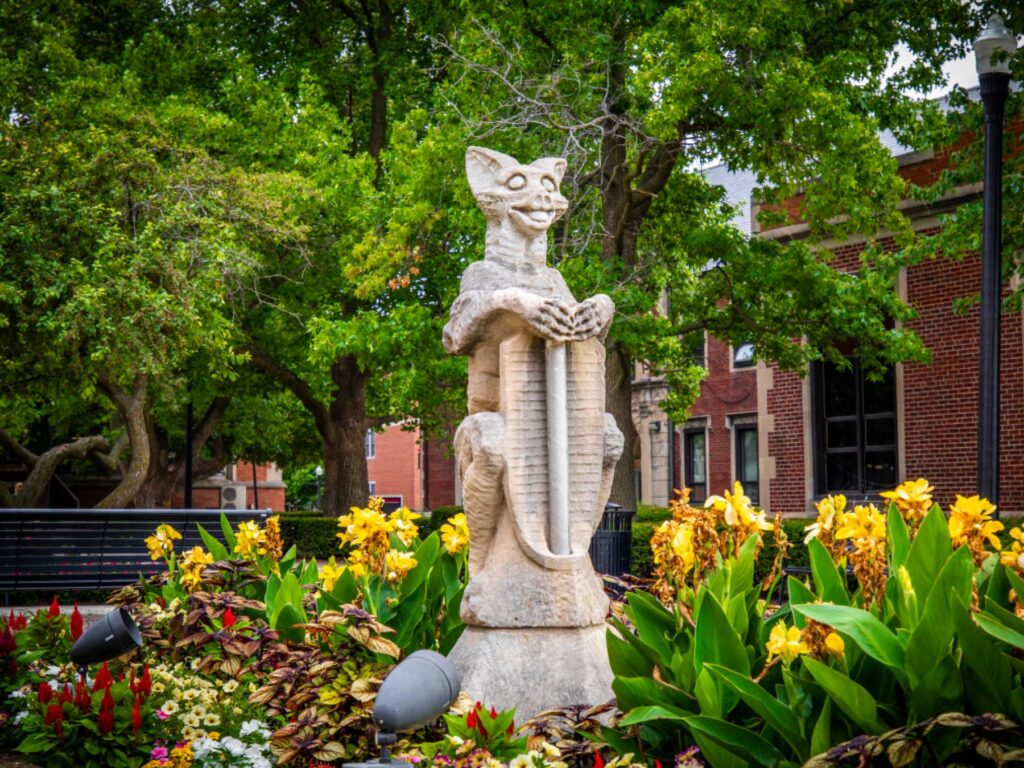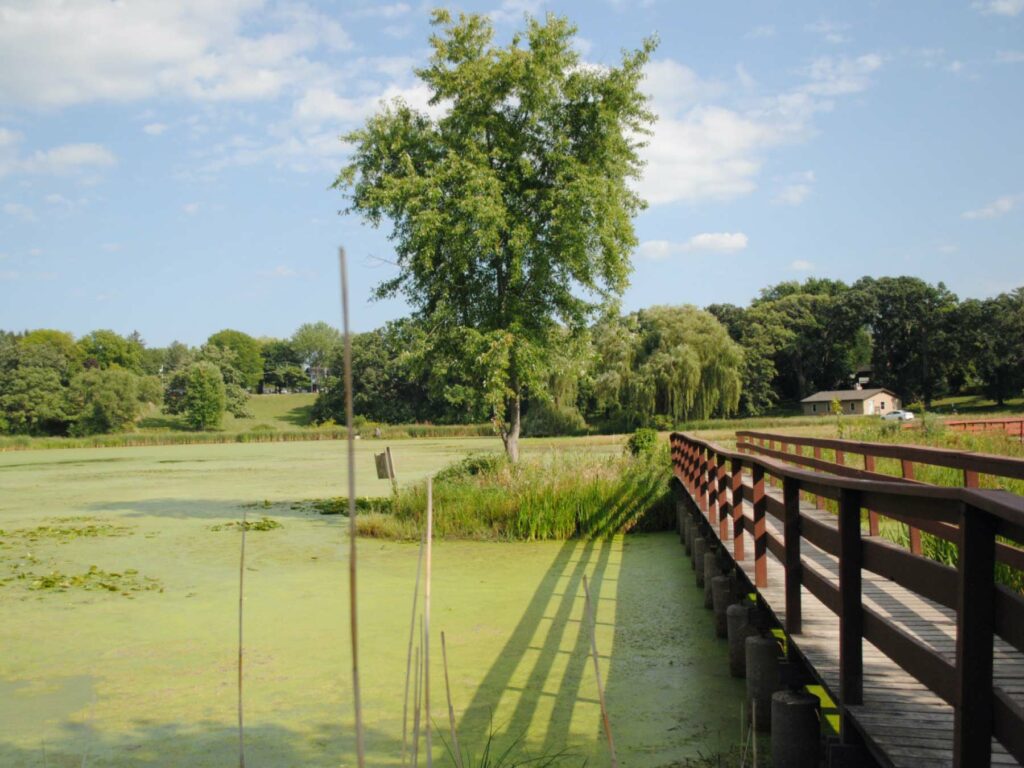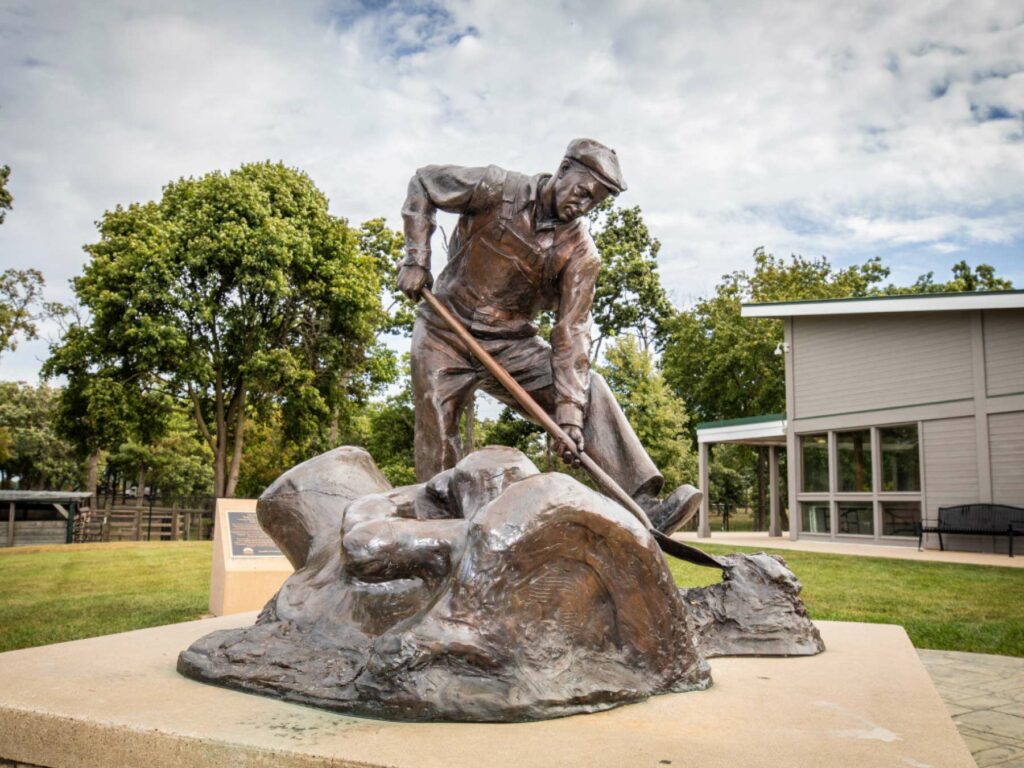Check out these destinations that reflect the genuine character of our region.

Olive Goyle
Northern Illinois University, corner of Castle Drive and College Avenue, DeKalb, niu.edu
While she may appear to be a mere statue, this grotesque’s history is rich with all of the legend and lore you’d expect from an enduring icon.
Designed by Altgeld Hall architect Charles Brush, this statue was once one of 11 grotesques adorning the roof of the university’s first building. According to the university’s archival material, the statue was struck by lightning in 1900 during the first commencement ceremony.
When lightning struck the statue again on Oct. 14, 1966, fragments of its damaged pedestal fell to the ground. The grotesque was removed four days later as a safety precaution and was kept in storage until 1973, when it was placed in its current location between Altgeld and Still halls.
Since then, students have adorned the statue for holidays and events. In 1996, it was officially named “Olive Goyle,” thanks to a naming contest organized by NIU Art Museum curator Jo Burke.
The statue has endured a handful of misadventures over the years, including a beheading prank in 2001, after which the Northern Star student newspaper organized a re-naming contest to encourage the return of the statue’s head. The head eventually showed up and the newspaper redubbed the statue Homer J. Goyle. Even so, the plaque in NIU’s garden still reads “Olive Goyle: Altgeld Hall’s Most Famous Grotesque.”

Veteran Acres Park
431 Walkup Road, Crystal Lake, (815) 477-5400, crystallakeparks.org
When the Walkup family settled in Crystal Lake in 1835, they built a cabin on what would become part of a cherished 156-acre park.
The Walkups used the land to raise cattle, farm and harvest timber. By 1869, the land had passed to Simon Gates, who added a schoolhouse to the property.
In 1923, the farmland, with its sweeping hills and majestic old oak trees, became a nine-hole golf course named Oakwoods Lodge. It closed in 1939, and the park district purchased it.
For years, the area was known as Walkup Woods, but after World War II it was renamed in honor of the men and women who had served in the military.
Today, the park invites visitors to explore its miles of hiking trails through woodlands, wetlands and the picturesque Wingate Prairie, a designated Illinois Nature Preserve. Playgrounds, a baseball diamond, a softball field, a sledding hill and a nature center bring families year-round.
What was once the Walkups’ cattle field is now a sparkling pond with a walking path. Where early settlers tilled the soil, visitors now park cars and hit tennis balls. And Gates’ schoolhouse, which was built where the Nature Center is located, is now a private residence at the corner of Walkup Avenue and Illinois Route 176.

Mastodon Dig Sculpture
Phillips Park Visitors Center, 1000 Ray Moses Dr., Aurora, (630) 256-3730, aurora-il.org
Amidst the challenging times of the Great Depression, President Franklin Delano Roosevelt introduced the Civil Works Administration (CWA) to employ millions of Americans through construction projects.
The CWA’s efforts to build a lake in Aurora’s Phillips Park yielded far more than anybody ever anticipated. That’s because laborers excavating the area in 1934 found the fossilized remains of mastodons, including skulls, 6-foot-long tusks, ribs, vertebrae and a 92-pound lower jaw.
The fossilized remains, estimated to be around 10,000 to 14,000 years old, serve as a fascinating glimpse into the region’s prehistoric past. They’re also one of the most prized showcases at the Phillips Park Visitors Center and Mastodon Gallery.
Displays inside the visitors center highlight the history of Phillips Park, the nearby Sunken Garden and the Phillips Park Zoo while enlarged photographs and a detailed historical timeline dive deeper into the story behind the discovery of these primitive fossils.
Outside stand mastodon sculptures with fact plaques, accents to the park’s playground and a commemorative bronze sculpture commissioned by the Aurora Public Art Commission in 2005.
Crafted by sculptor Erik Blome, whose works stand across the Chicago area and America, this highly realistic, slightly larger-than-life sculpture sits in front of the Visitors Center at Phillips Park. It prominently features a CWA laborer unearthing the mastodon bones with hand tools.





















































